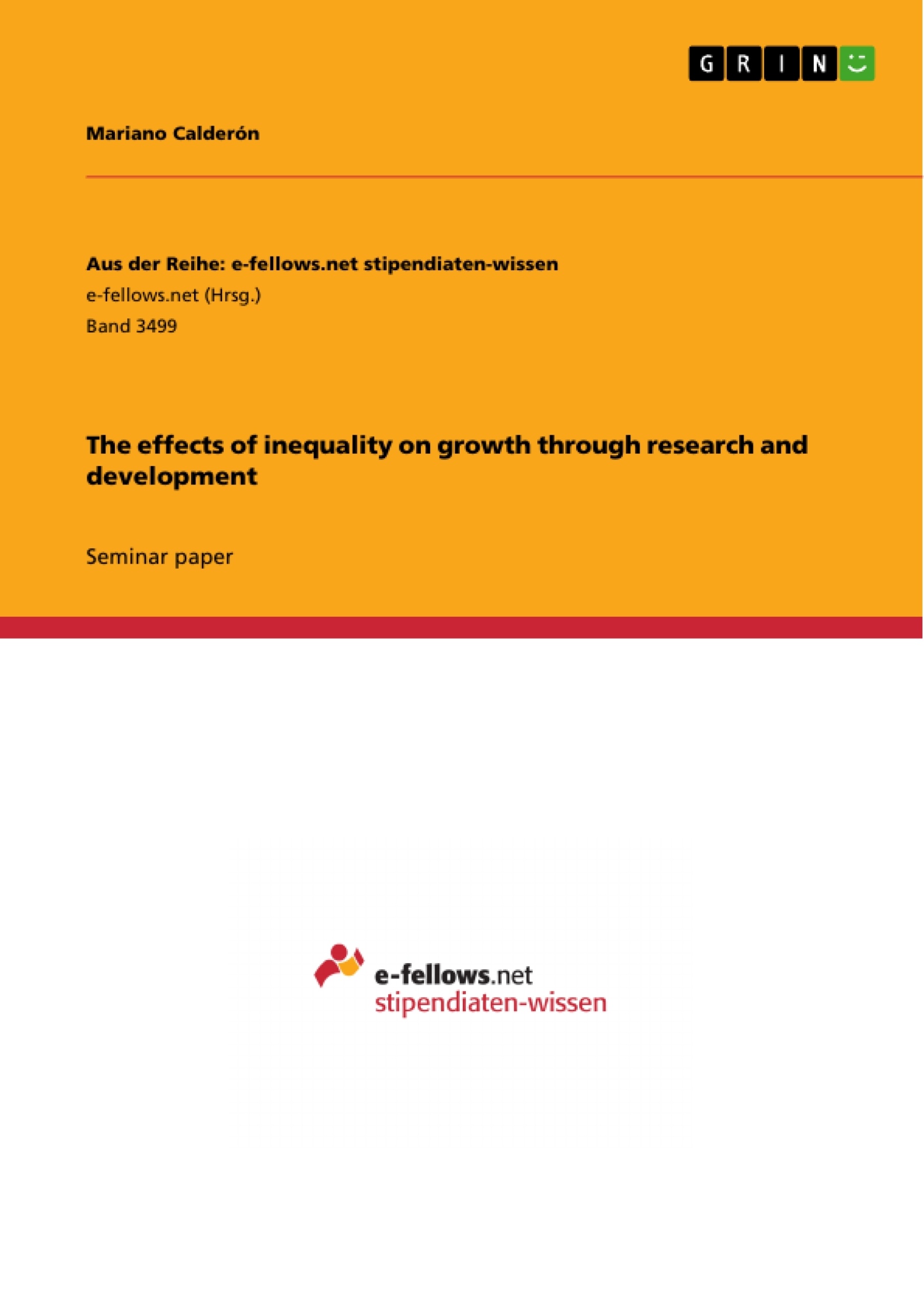This seminar paper reviews some of the approaches to the theory that links inequality to growth through the channel of innovations, focusing on the model developed by Foellmi and Zweimüller. In the next section, I connect the latter paper to works from the literature of endogenous growth and demand induced innovations. In section 3, I summarize the model by Foellmi and Zweimüller and outline the results of models with differing assumptions.
The last four decades have seen a clear trend of rising inequality across countries. This observation has initiated an intense debate among researches, policymakers, and civil society about the consequences of whether to counteract this trend. Discussions are mostly framed within the conception of an equity versus efficiency trade-off based on the premise that, even if equity might be desirable, some level of inequality is necessary to maintain economic performance incentives. However, recent theoretical and empirical literature has pointed out that inequality might also have negative economic consequences, such as lower economic growth. For instance, Neves, Afonso, and Silva (2016) find in a meta-study that 36 out of 41 analyzed estimations suggest a negative effect of inequality on growth, though the average effect of the Gini-coefficient on growth rates seems to be relatively small.
Theorists have argued about different channels through which inequality might affect growth, such as political instability, redistribution policies, or inefficient investments in human and physical capital through market imperfections. However, Zweimüller (2000a) points out that the role of demand on in centives to realize productive investments has been so far neglected by the literature. As an answer to this gap, a framework that allows to examine this channel has been elaborated through the works of Zweimüller (2000b), Matsuyama (2002), Foellmi and Zweimüller (2004, 2006, 2017), Foellmi, Wuergler, and Zweimüller (2014), Hatipoglu (2012), among others. The common question that guides this research body is, how does inequality affect economic growth through demand induced innovations?
Inhaltsverzeichnis (Table of Contents)
- Introduction
- Related literature
- Endogenous growth
- Inequality, demand and investment incentives
- The effects of inequality on growth
- Demand induced innovations
- The sources of technological progress
- Competition and IPR policy
- Conclusion
Zielsetzung und Themenschwerpunkte (Objectives and Key Themes)
This seminar paper explores the relationship between inequality and economic growth, focusing on the role of innovation in driving growth through demand-induced technological progress. It reviews various theoretical models that investigate how inequality affects innovation incentives and ultimately impacts economic growth rates.
- The impact of inequality on innovation incentives and economic growth.
- The role of demand-induced innovations in driving economic growth.
- The effects of non-homothetic preferences and income distribution on market size and prices for innovative goods.
- The influence of competition, intellectual property rights (IPR) policy, and different types of innovation on the relationship between inequality and growth.
- The relevance of models developed by Foellmi and Zweimüller (2006) and other related studies in understanding the dynamics of inequality and growth.
Zusammenfassung der Kapitel (Chapter Summaries)
- Introduction: The paper introduces the topic of inequality and its potential consequences for economic growth, highlighting the growing body of research that explores this complex relationship. It discusses the contrasting perspectives on whether inequality is necessary for economic efficiency or whether it can have detrimental effects on growth.
- Related literature: This chapter delves into the existing literature on endogenous growth, highlighting the significance of innovation and total factor productivity (TFP) in driving long-term growth. It connects these concepts to the specific channel explored by Foellmi and Zweimüller (2006), emphasizing the role of demand in shaping innovation incentives.
- The effects of inequality on growth: This section presents the core model developed by Foellmi and Zweimüller (2006), outlining how inequality affects innovators' profits and their incentives to invest in growth-enhancing innovations. It explores the market size and price effects of inequality, analyzing the potential trade-offs and how they can influence economic growth. It also discusses variations in the model with differing assumptions regarding innovation types, competition, and IPR policy, highlighting the potential for divergent outcomes in terms of the relationship between inequality and growth.
Schlüsselwörter (Keywords)
The key topics and concepts explored in this seminar paper include inequality, economic growth, innovation, demand-induced innovation, non-homothetic preferences, market size, price effects, intellectual property rights, competition, total factor productivity, learning-by-doing, endogenous growth, and the models developed by Foellmi and Zweimüller (2006).
- Quote paper
- Mariano Calderón (Author), 2019, The effects of inequality on growth through research and development, Munich, GRIN Verlag, https://www.grin.com/document/899511



